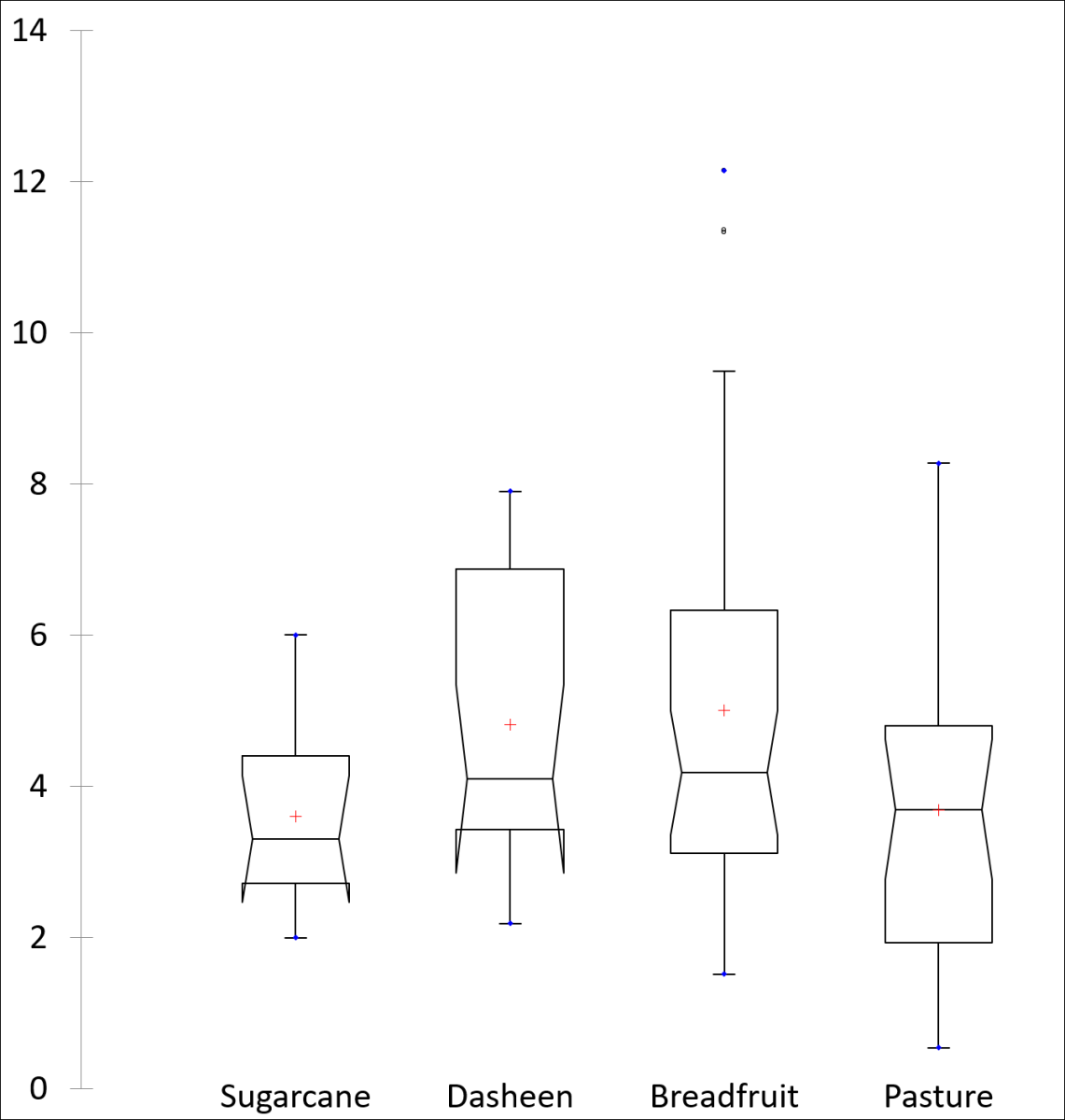

Soil organic matter (SOM) contains more carbon than the atmosphere and terrestrial vegetation combined and therefore plays a crucial role in the global cycling of carbon (Figure 1).
Soil organic carbon (SOC), the primary component of SOM is a dynamic matrix and can be either a net sink or a net source of greenhouse gases (GHGs) depending on its management.
* = Photosynthetic fixation; ‡ autotrophic respiration; † terrigenous carbon; ⱶ Rhizodeposition and necromass;∞heterotrophic respiration; ᶶ land use and land use changes.
Figure 1. Global carbon stocks and fluxes.
 Currently, it is estimated that CO2 emissions from soils account for roughly 35% of total annual CO2 emissions. Here, we report on GHG flux measurements and other biogeochemical parameters as key aspects to understanding the drivers of global climate change, and the short- to long-term consequences of ecosystem management at multiple scales (Figures 2 & 3).
Currently, it is estimated that CO2 emissions from soils account for roughly 35% of total annual CO2 emissions. Here, we report on GHG flux measurements and other biogeochemical parameters as key aspects to understanding the drivers of global climate change, and the short- to long-term consequences of ecosystem management at multiple scales (Figures 2 & 3).




Figure 2 &3. Spatial distribution of soil-atmospheric carbon flux sampling sites across different land-use cover during the rainy season & Determination of soil-atmospheric carbon flux using an automated soil gas flux system.
Soil-Atmospheric Carbon Flux


Figure 4. Chamber CO2 mole fraction during measurement of soils under dry conditions (A), and during a rain event (B). The initial decrease in CO2 mole fraction is due to mixing of the high mole fraction air trapped in the measuring loop from the previous measurement.

 To better understand the role of SOM/SOC in climate change mitigation and adaptation, it is imperative to understand its degradation dynamics (Figure 6). In general, the turnover of SOM/SOC is a function of molecular structure, but also its interactions with soil minerals and pedogenic oxides.
To better understand the role of SOM/SOC in climate change mitigation and adaptation, it is imperative to understand its degradation dynamics (Figure 6). In general, the turnover of SOM/SOC is a function of molecular structure, but also its interactions with soil minerals and pedogenic oxides.
Figure 6. Superimposed 2-D HR-MAS NMR spectra of ‘fresh’ (blue) and degraded microbial-derived organic matter (red). General assignments are presented with the Figure. Purple and green circles denote peptidoglycan and lipoproteins, respectively.
We wish to acknowledge the Principal’s New Initiative Grant (UWI, Mona) and the Ministry Science Energy and Technology for crucial Financial Support. Special thanks also to the Agricultural Land Management Division, MICAF; Dr. Derrick Deslandes (President, CASE); Charles Grant (Director General), Deanna Rose, Sedrina Williams and Conroy Lewis (ICENS); and Taneisha Edwards (Department of Geology & Geography, UWI) for their support.